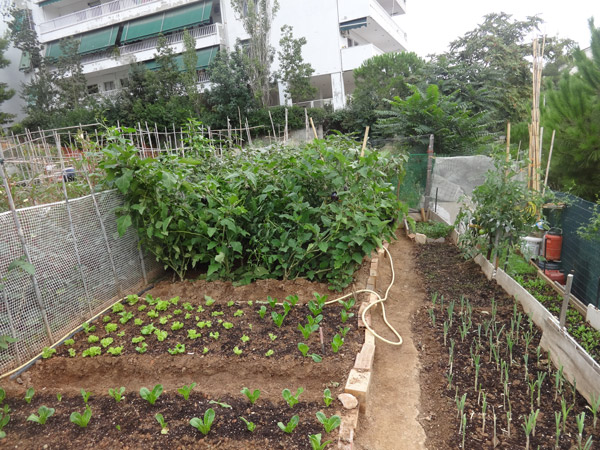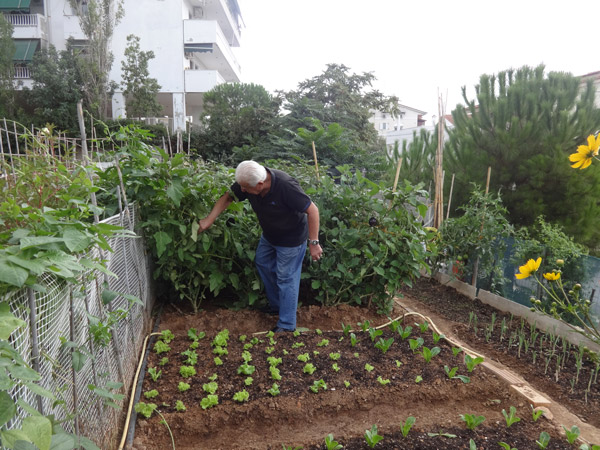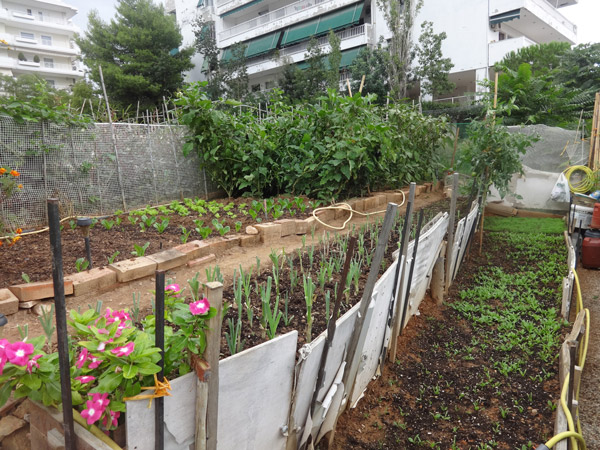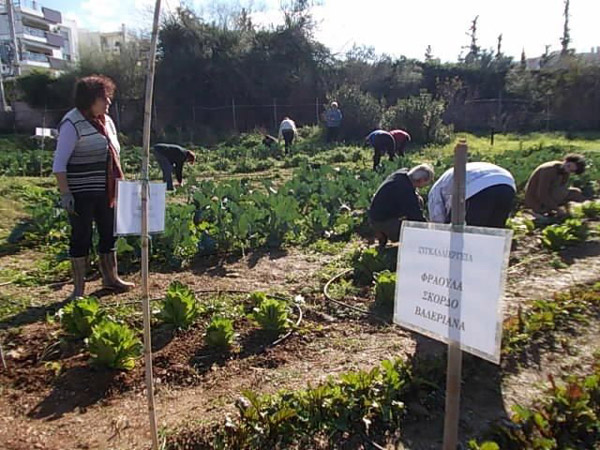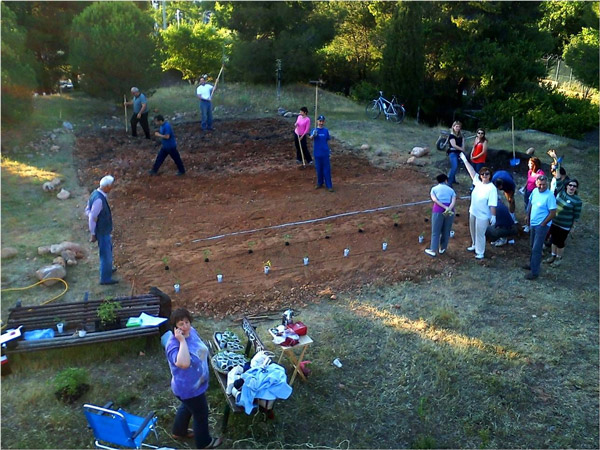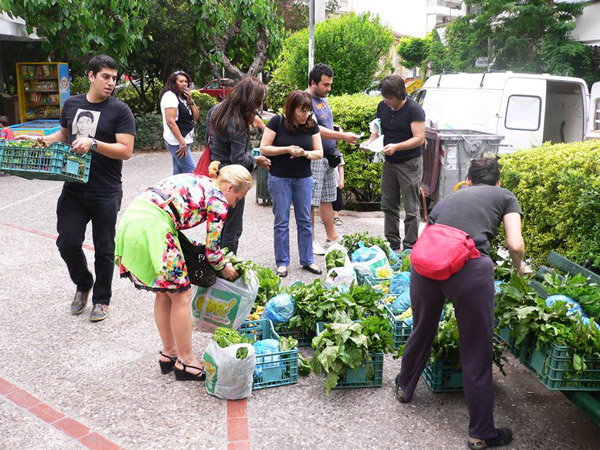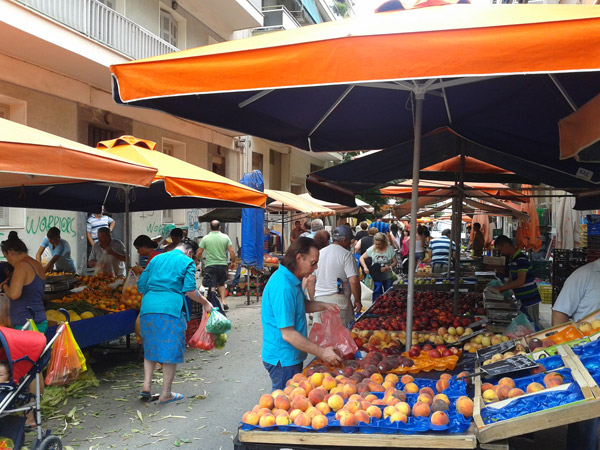The field in the city: Urban agriculture and producer-consumer solidarity networks in the neighbourhoods of Athens
Anthopoulou Theodosia
Quartiers, Social economy
2015 | Dec
Urban agriculture seems to be a paradoxical combination, as it involves two heterogeneous worlds, the urban and the rural. However, historically, the city and agriculture have always been intertwined. It was only in the 20th century and especially after World War II, that this relationship was geographically and functionally disrupted, following the full industrialisation of agricultural production and the internationalisation of markets. The transition from ‘traditional’ to the so-called ‘productivist’ agriculture was impressive as crop yields sky-rocketed. The perception that“the city is one thing and the countryside is another and the two can only meet in the aisles of supermarkets” (Fox 2011) became entrenched during that time.
Urban agriculture may be briefly defined as the cultivation of plants or even small scale animal breeding within the urban fabric and on the outskirts of cities (FAO 1999). What differentiates urban agriculture from open field agriculture is that the former is integrated and interacts with the ecological system of the city and the urban economy: it (re)uses human and material resources, products and services of the city while its production is mainly intended for the consumption of fresh products by urban households (Mougeot 2005, Pothukuchi and Kaufman 1999). Urban agriculture has a long tradition in the industrial cities of the Western world and gained new ground in the 1970s, as part of the dynamics of social movements that challenge consumerism as a value system. They put forward an alternative model for production and development, respecting nature and its pace, the rights of workers, local communities and their resources. The technological modernisation of agriculture and the globalisation of agribusiness have cut off consumers from family agriculture and places of production. This trend however has given rise to the need to re-establish our relationship with food and with the soil, to know where food comes from and how it is produced and to rediscover forgotten flavours, through local products and indigenous seeds.
It is worth noting that the international financial crisis led to price volatility and inflation in staple foods as well as growing problems of urban poverty – even in western metropolises. Those issues have sparked new debates on food issues in cities. The challenge is the seamless access to fresh and nutritious food for all social strata in the context of food planning in cities and food justice (FAO 2010, Gotlieb and Joshi 2013). From the famous vegetable gardens in New York, Detroit and Vancouver to Berlin, Paris and Lisbon, urban agriculture is considered the response to the generalised urban crisis. It is not only offered as a way to tackle the degradation of the quality of life in cities, but is also seen as an opportunity to improve the nutritional quality of the diet of the poorest strata of the urban population.
The proliferation of small family vegetable gardens in yards, balconies and terraces as well as collective urban farming initiatives of active citizens and city movements in abandoned, unused or other free open spaces expresses the very necessity of (re)localising agricultural production systems. Urban agriculture offers several benefits, such as the production of fresh food and savings for the family budget, the greening of the city, environmental management (e.g. composting of household organic waste to help reduce heat in cities), the re-enstatement of social bonds in neighbourhoods, the promotion of mental health and opportunities for recreation, exercise, education, etc. In other words, apart from food production, urban agriculture contributes to the production of public goods in the city and therefore its added value is much higher than the monetary value of agricultural production (Dubbeling et al. 2010).It rightly deserves a place in urban planning’s toolkit (Halweil and Nierenberg 2007).
At the same time, new alternative market forms have emerged in Europe and North America. These are small food distribution chains and producer-consumer solidarity networks based on mutual trust and fairness. They apply social criteria in the consumption of products and are critical of the marketing strategies and consumption patterns promoted by large distribution networks (Renting et al. 2012). These alternative networks bring city consumers into direct contact with farmers-producers and their culture. The development of trusting relationships supports small producers, the sustainability of local economies, natural and cultural diversity and fair trade for the benefit not only of producers (fair prices, no intermediaries) but also of city consumers, who can enjoy fresh, healthy and nutritious food at affordable prices compared to similar standardised products in cellophane packages in supermarkets.
The relationships between the urban and the rural are redefined by urban vegetable gardens and organic fields (individual, collective or the result of citizen movements claiming “the right to the city”), baskets of fresh vegetables distributed by producers to active consumer communities in neighbourhoods, “no intermediary” networks where farmers supply their produce directly to organised open spaces and points of sale. Rural open markets, eco-events and solidarity trade festivals contribute to the revival of neighbourhoods, the re-establishment of social bonds and the improvement of the quality of city life.
In Greece, both urban agriculture and solidarity networks’ markets appeared very recently following the onset of the economic crisis, which affects urban households in a more dramatic way. As the crisis deepens, municipal urban vegetable gardens multiply across Greece, as do other remarkable collectives and citizen movements claiming public space for productive, social and educational purposes through the introduction of organic farming, the creation of seed banks and collective kitchens. Meanwhile, an increasing number of “vegetable baskets” are distributed across Athens as part of “community supported agriculture”. Producer-consumer solidarity networks and “no intermediary” networks have also grown in numbers following the popularity of the “potato movement” in 2012. In any case, urban farming within and outside the Athenian metropolis and consumer-producer networks not only reflect demand for food security and access to fresh nutritious food at affordable prices for all social groups, but also the need to reconnect residents with their neighbourhood, the city and the nearby countryside through participatory processes and socially managed actions, thus giving meaning to the vision of a sustainable city.
Entry citation
Anthopoulou, T. (2015) The field in the city: Urban agriculture and producer-consumer solidarity networks in the neighbourhoods of Athens, in Maloutas T., Spyrellis S. (eds) Athens Social Atlas. Digital compendium of texts and visual material. URL: https://www.athenssocialatlas.gr/en/article/the-field-in-the-city/ , DOI: 10.17902/20971.32
Atlas citation
Maloutas T., Spyrellis S. (eds) (2015) Athens Social Atlas. Digital compendium of texts and visual material. URL: https://www.athenssocialatlas.gr/en/ , DOI: 10.17902/20971.9
References
- Halweil B και Nierenberg D (2007) Καλλιεργώντας στις πόλεις, στο, Η κατάσταση του κόσμου. Το αστικό μας μέλλον. O’Hara M (επιμ.), Αθήνα: Ευώνυμος Οικολογική Βιβλιοθήκη.
- Bell S, Fox-Kämper R, Keshavarz N, et al. (2016) Urban Allotment Gardens in Europe. 1st ed. New York: Routledge.
- Dubbeling M, Zeeuw H de and Veenhuizen R van (2010) Cities, poverty and food: multi-stakeholder policy and planning in urban agriculture. 1st ed. Warwickshire UK: Practical Action Publishing. Available from: http://www.ruaf.org/sites/default/files/PDFCitiesPovertyFood.pdf.
- FAO Economic (1999) Issues in Urban Agriculture. Available from: http://www.fao.org/ag/magazine /9901sp2.htm.
- FAO Economic (2010) Fighting Poverty and Hunger-What role for urban agriculture? Economic and Social Development Department of the Food and Agriculture Organization of the United Nations (FAO).
- Fox T (2011) Urban Farming: Sustainable city living in your backyard, in your community, and in the world. Calvert J and Deputato A (eds), Irvine, California: Hobby Farm Press.
- Gotlieb R and Joshi A (2013) Food Justice. 1st ed. Massachusetts: The MIT Press.
- Lohrberg F, Lička L, Scazzosi L, et al. (2015) Urban Agriculture Europe. 1st ed. Lohrberg F, Lička L, Timpe A, et al. (eds), Berlin: Jovis.
- Mougeot LJA (2010) Agropolis:‘ The Social, Political and Environmental Dimensions of Urban Agriculture’. 1st ed. Mougeot LJA (ed.), London: Earthscan Ltd, IRDC Canada.
- Nikolaidou S (2014) Emerging forms of Urban Gardening in Geneva. Basel: Short Term Scientific Mission Report. Basel.
- Pothukuchi K and Kaufman JL (1999) Placing the food system on the urban agenda: The role of municipal institutions in food systems planning. Agriculture and Human Values 16(2): 213–224.
- Renting H, Schermer M and Rossi A (2012) Building Food Democracy : Exploring Civic Food Networks and Newly Emerging Forms of Food Citizenship. International Journal of Sociology of Agriculture and Food 19(3): 289–307.
- Smit J, Ratta A and Nasr J (1996) Urban Agriculture: Food, Jobs and Sustainable Cities. UNDP – United Nations Development Program, New York: UNDP United Nations Publication.
Information on urban farming, food safety and cities’ agrofood planning:
Information on urban vegetable gardens in Europe (activities within the COST program):
- Nikolaidou, S. (2014) Emerging forms of Urban Gardening in Geneva. Basel: Short Term Scientific Mission Report, COST Action TU1201 Urban Allotment Gardens. www.urbanallotments.eu/fileadmin/uag/media/STSM/STSMReport_SN.pdf
- Lohrberg, F., Licka., L, Scazzosi, L. and Timpe, A. (eds) (2015) Urban Agriculture Europe. Berlin: Editions Jovis.
- Bell, S., Fox-Kamper, R., Keshavarz, N., Benson, M., Caputo, S., Noori, S. and Voight, A. (eds) (2016) Urban Allotment Gardens in Europe. UK: Routlegde.

